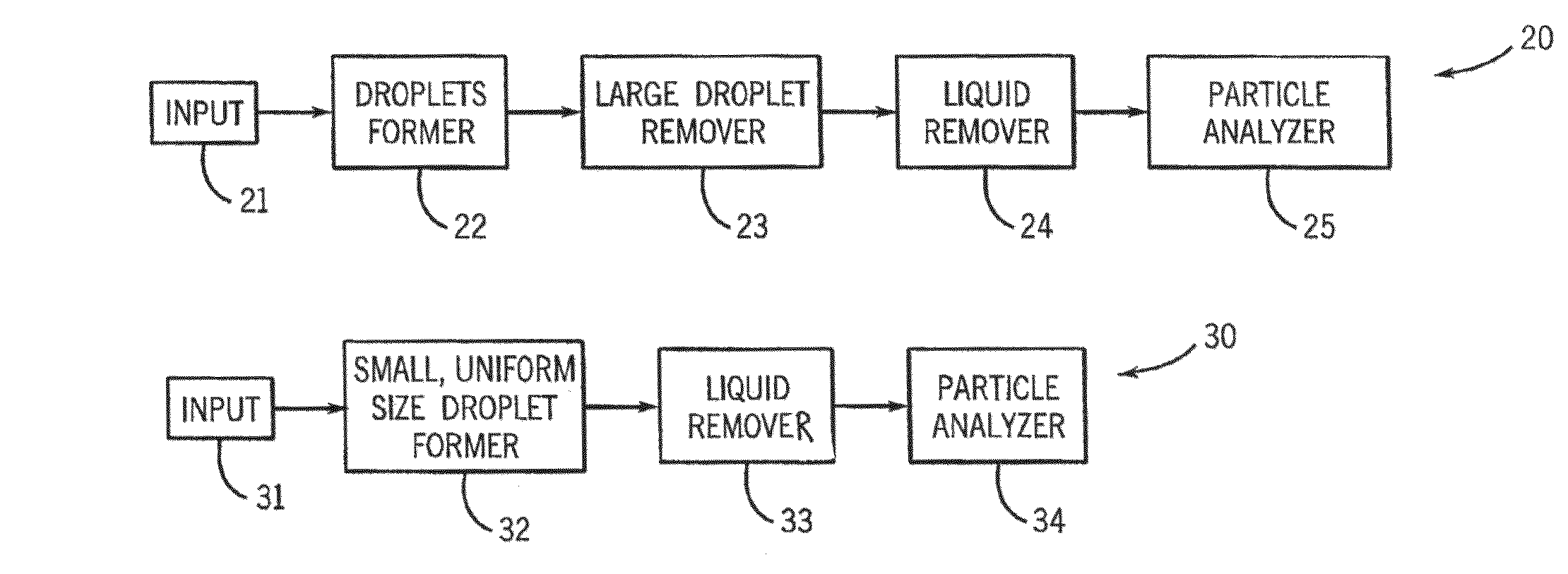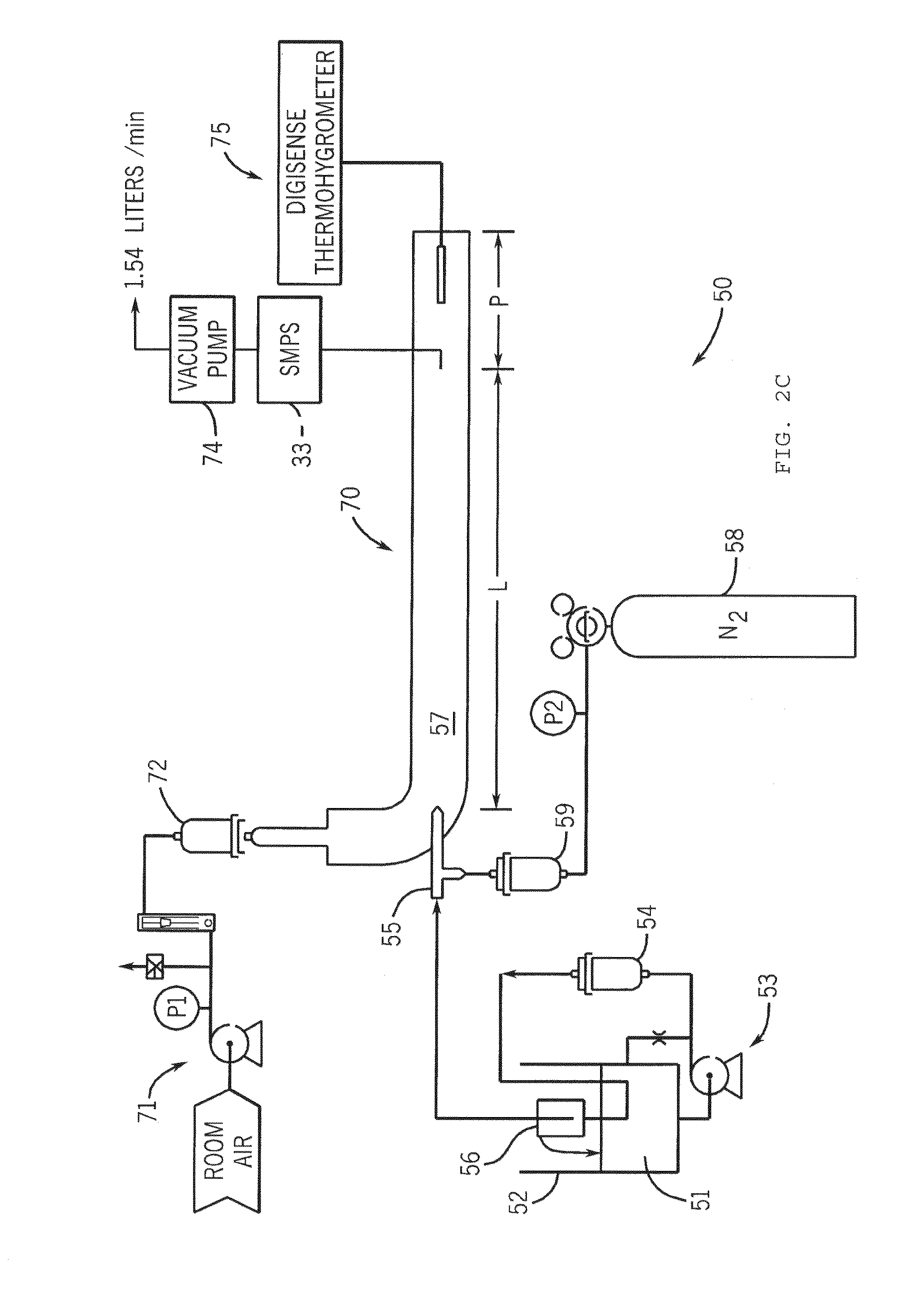Residue concentration measurement technology
a technology of residue and concentration measurement, applied in the field of analytical methods and apparatuses, can solve the problems of affecting the accuracy of measurement, difficult formation of small droplets, other changes in particle properties, etc., and achieves the effects of reducing the difficulty of forming small droplets, and increasing the efficiency of impactors
- Summary
- Abstract
- Description
- Claims
- Application Information
AI Technical Summary
Benefits of technology
Problems solved by technology
Method used
Image
Examples
Embodiment Construction
[0050]The present invention provides a method and apparatus for determining the concentration of dissolved non-volatile residue (dNVR) and the size distribution and concentration of particulate non-volatile residue (pNVR) in a colloidal suspension.
[0051]A. Methods of the Invention.
[0052]The method involves several aspects including (a) forming droplets, for example via aerosolization, from a sample of a colloidal suspension to be analyzed, (b) isolating small droplets from the droplets, for example less than 1 um in size, (c) drying the droplets to remove the liquid, for example via evaporation, and (d) counting and sizing the residual particles.
[0053]Importantly, the aerosol droplets isolated are small and uniformly sized, less than 1 μm and preferably a median size less than 0.5 μm. The droplets must be small and uniformly sized because dNVR in the droplet will form a “residue” particle as a result of drying. If the droplets are sufficiently small and uniformly sized, the particle...
PUM
| Property | Measurement | Unit |
|---|---|---|
| median diameter | aaaaa | aaaaa |
| diameter | aaaaa | aaaaa |
| diameter | aaaaa | aaaaa |
Abstract
Description
Claims
Application Information
 Login to View More
Login to View More - R&D
- Intellectual Property
- Life Sciences
- Materials
- Tech Scout
- Unparalleled Data Quality
- Higher Quality Content
- 60% Fewer Hallucinations
Browse by: Latest US Patents, China's latest patents, Technical Efficacy Thesaurus, Application Domain, Technology Topic, Popular Technical Reports.
© 2025 PatSnap. All rights reserved.Legal|Privacy policy|Modern Slavery Act Transparency Statement|Sitemap|About US| Contact US: help@patsnap.com



